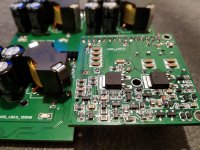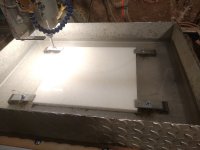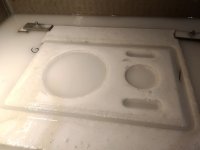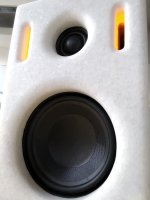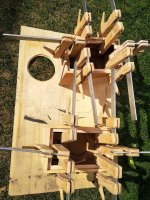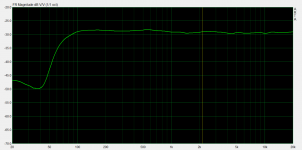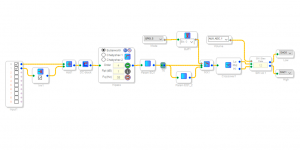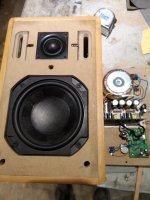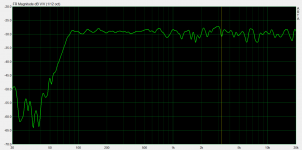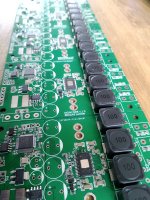Hello fellow DIYers 😀
I proudly present my 100% diy nearfield Monitors.
After nearly 2 years of prototyping, designing and testing they are ready.
My goal was to design more or less cheap active nearfield speakers.
I compared them to Genelec 1029a (which i really like),
and they performed better then expected, they sound awesome. 😀
They are powered by an 50VA 25V torodial transformer, with an added
5V winding for the DSP.
They are bi-amped with two self oscillating class-D Modules,
and controlled by an ADAU1701.
Woofers are 5" Faitalpro 5FE120, amazing and cheap (<30€).
Tweeters are 1.3" soft dome LAVOCE TN131.00 (<15€).
I also added an extra switch, i call it "HIFI mode", which boosts the lows
and the highs. 😎
The front is made of 20mm South-Tyrolean Marble, wood is cherry,
and th br-channels are made of mdf.
Since i got the marble and wood for free the total cost for 1 speaker was
aprox. 80€ (working hours included <5000€ 😉 )
Since i dont have access to an anechoic room, i used the silence outside due
to the corona quarantine here in Italy to measure and adjust the speakers. 😛
The neighbours probably got crazy after 2 hours of sweeps 😀.
Here are some PICs:
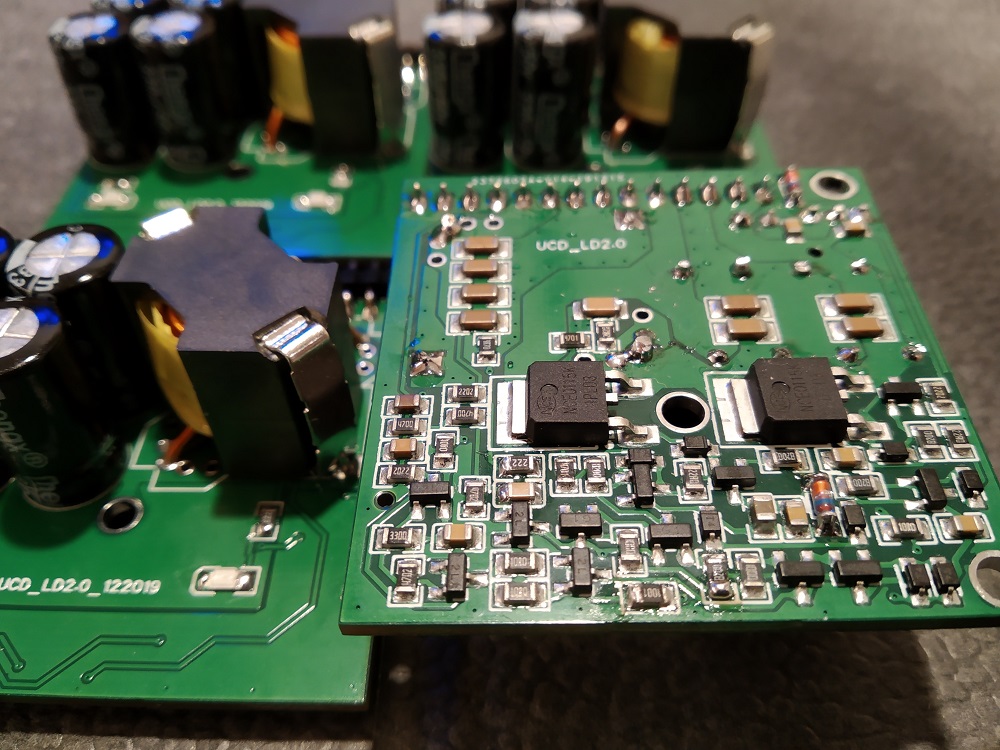
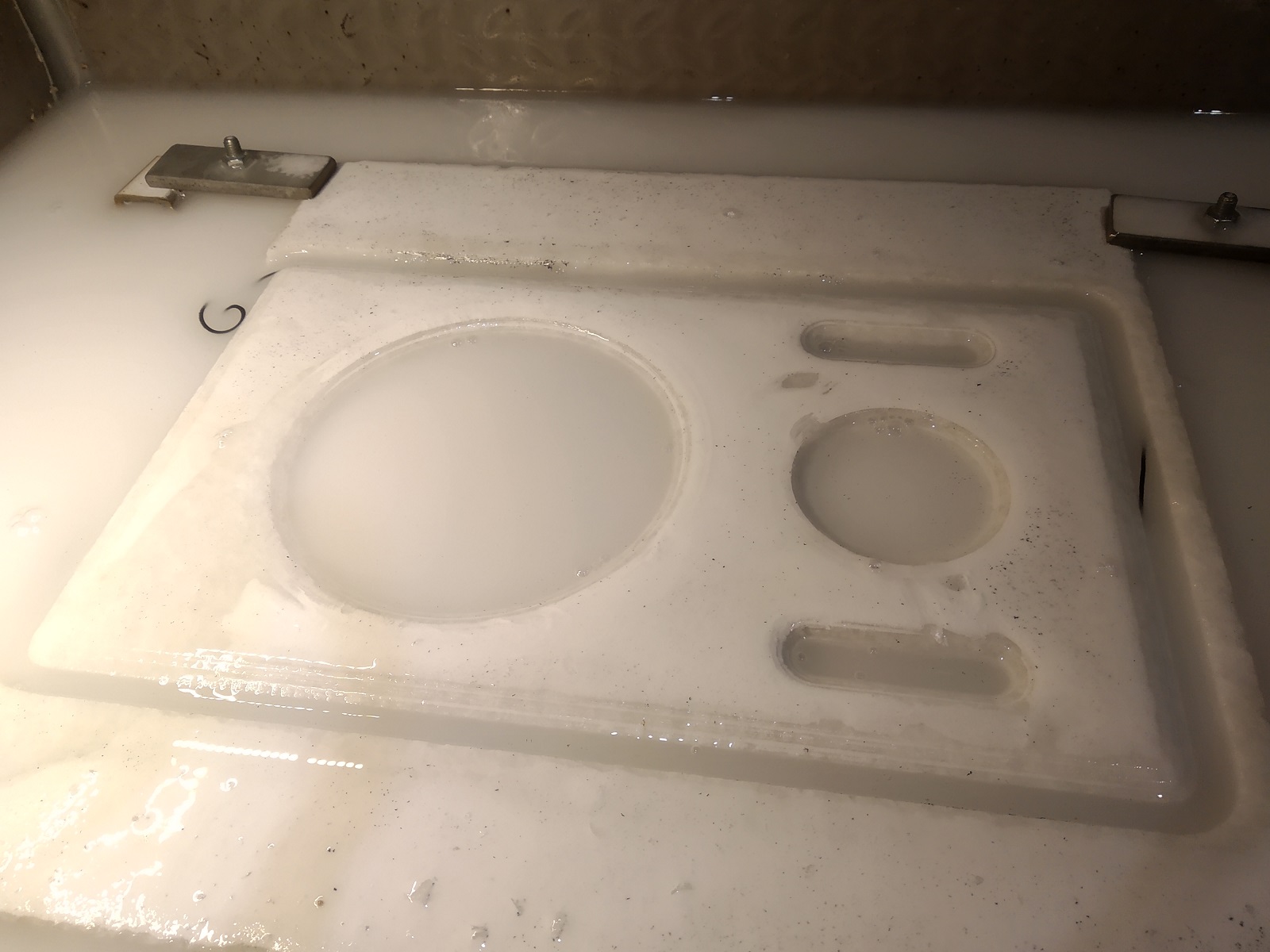

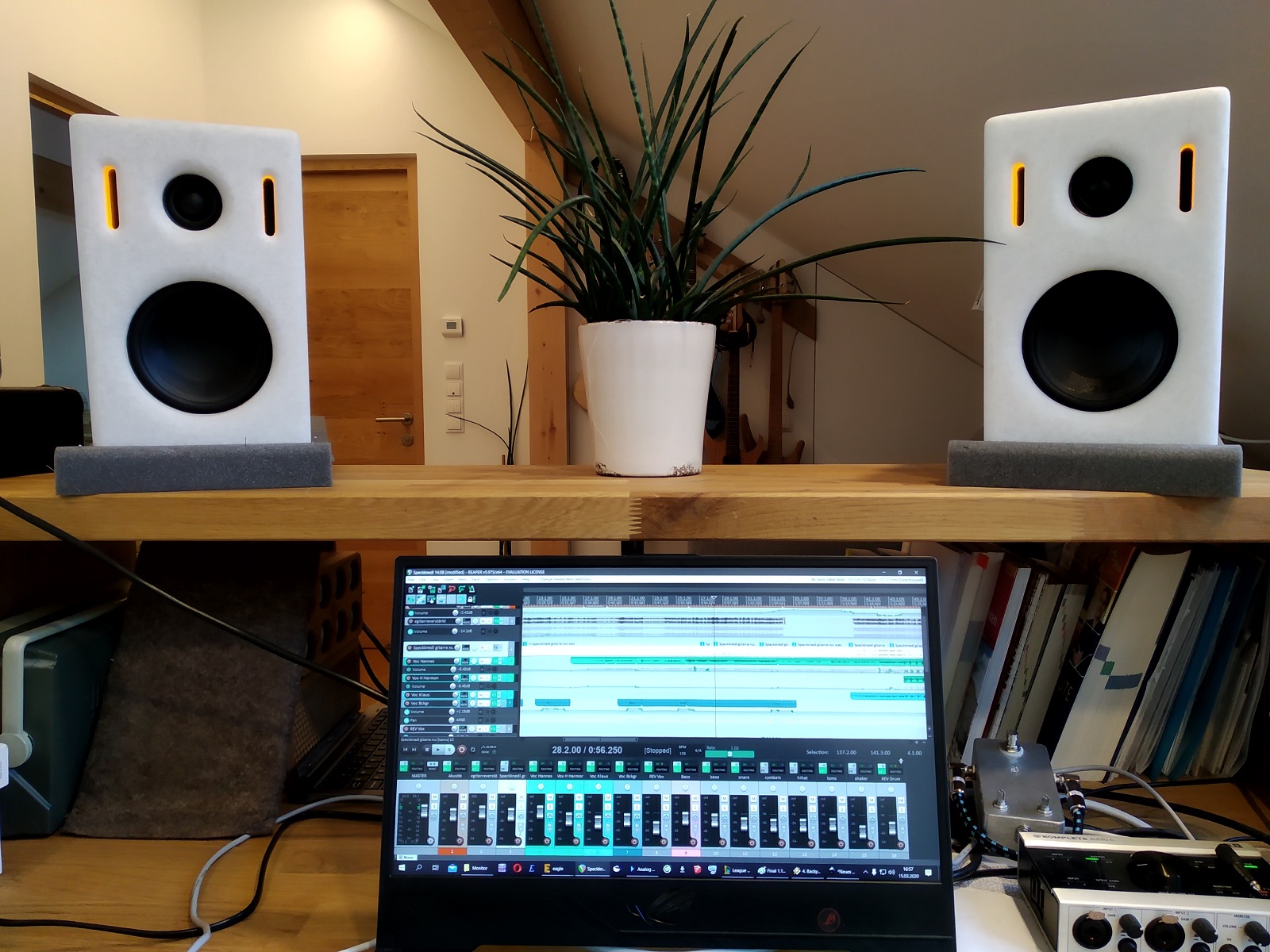

The measured frequency response after adjunsting with the DSP:

Maybe i will replace the transformer with a flyback SMPS, and place everything on one PCB...
Lets see 😉
I proudly present my 100% diy nearfield Monitors.
After nearly 2 years of prototyping, designing and testing they are ready.
My goal was to design more or less cheap active nearfield speakers.
I compared them to Genelec 1029a (which i really like),
and they performed better then expected, they sound awesome. 😀
They are powered by an 50VA 25V torodial transformer, with an added
5V winding for the DSP.
They are bi-amped with two self oscillating class-D Modules,
and controlled by an ADAU1701.
Woofers are 5" Faitalpro 5FE120, amazing and cheap (<30€).
Tweeters are 1.3" soft dome LAVOCE TN131.00 (<15€).
I also added an extra switch, i call it "HIFI mode", which boosts the lows
and the highs. 😎
The front is made of 20mm South-Tyrolean Marble, wood is cherry,
and th br-channels are made of mdf.
Since i got the marble and wood for free the total cost for 1 speaker was
aprox. 80€ (working hours included <5000€ 😉 )
Since i dont have access to an anechoic room, i used the silence outside due
to the corona quarantine here in Italy to measure and adjust the speakers. 😛
The neighbours probably got crazy after 2 hours of sweeps 😀.
Here are some PICs:
The measured frequency response after adjunsting with the DSP:
Maybe i will replace the transformer with a flyback SMPS, and place everything on one PCB...
Lets see 😉
Attachments
Very nice look, and light in the ports must look good when its dark. That waveguide to tweeter looks deep, any issues? You should increase measurement resolution to at least 1/6 octave
It would be nice if ports turned red if in danger for overload, blue when cold and green for normal use and yellow when levels just started to get high
Thx, the ports are just beatuful in the dark, because the light shines a bit through the marmor and makes it glow like its on fire.
I didnt make any off axis measurements for 3 reasons:
1: I am always sitting in the Sweet Spot when i am mixing
2: I didnt wanna disapoint myself 😀 (bc that waveguide is really deep like u saw) so probably a problem off axis.
and i dont wanna grind this marble again 🙄
3: I dont have proper measurement equiptment to make a ideal measure.
Here is the fr with 1/12 smoothing:
But i cant say how much comb filter effect comes from walls, and ground outside.
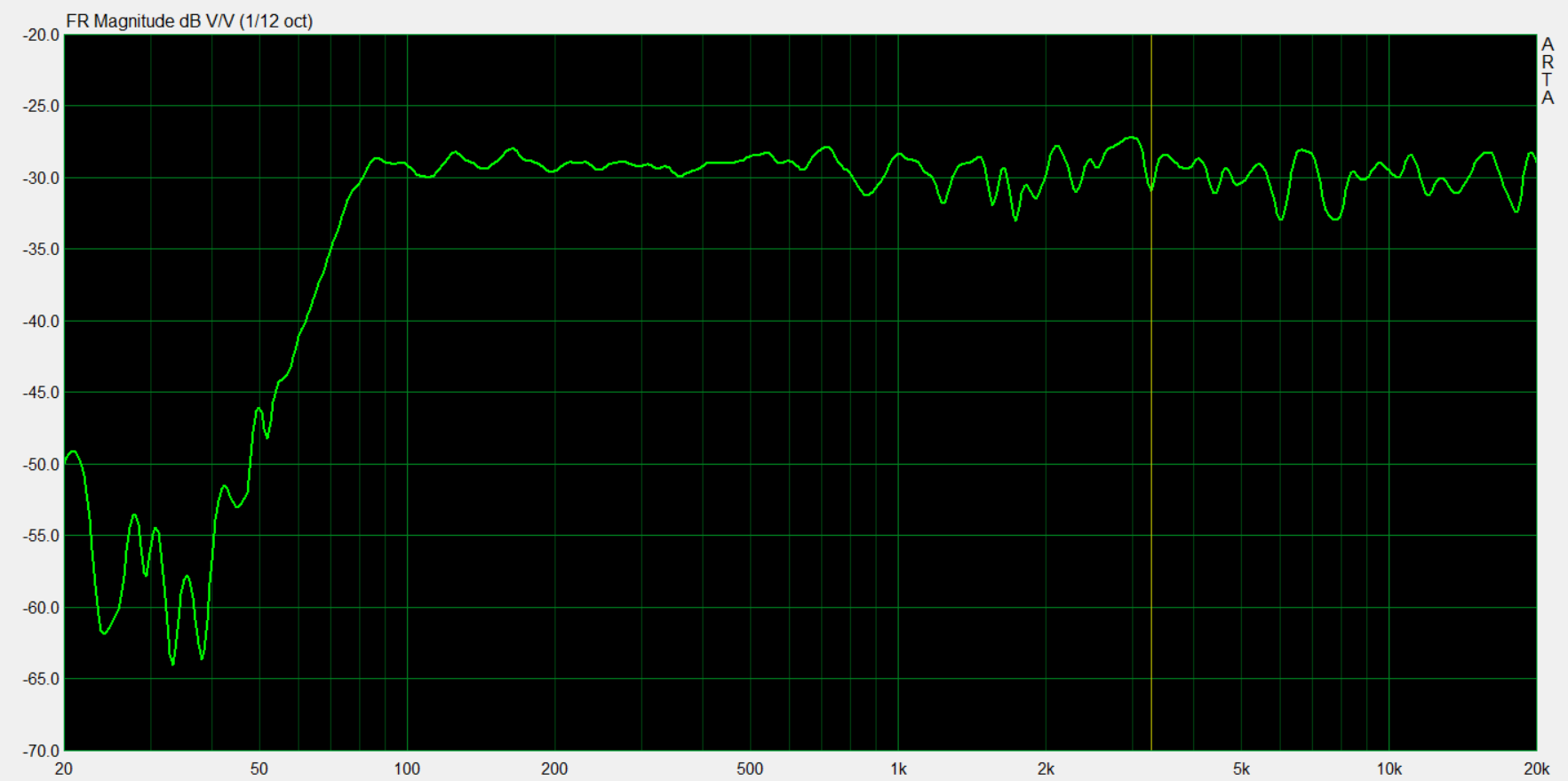
I didnt make any off axis measurements for 3 reasons:
1: I am always sitting in the Sweet Spot when i am mixing
2: I didnt wanna disapoint myself 😀 (bc that waveguide is really deep like u saw) so probably a problem off axis.
and i dont wanna grind this marble again 🙄
3: I dont have proper measurement equiptment to make a ideal measure.
Here is the fr with 1/12 smoothing:
But i cant say how much comb filter effect comes from walls, and ground outside.
Attachments
Nice work!
I think a little look at off-axis is a good idea anyway, since you have used a DSP you can make some accounting for this in the crossover (getting a balance if there is a null or bunching up) though, I appreciate you are using on-axis it is always good to know 🙂
The 1029a is my favourite speaker (that I've heard) and I've owned a few 1029a units in my time, the modern class-d Genelecs don't seem to measure up IMO though I haven't heard the latest biggest and baddest ones of late.
Which DSP board did you use?
I will definitely take you recommendation and try the Faital and La Voce drivers.
I think a little look at off-axis is a good idea anyway, since you have used a DSP you can make some accounting for this in the crossover (getting a balance if there is a null or bunching up) though, I appreciate you are using on-axis it is always good to know 🙂
The 1029a is my favourite speaker (that I've heard) and I've owned a few 1029a units in my time, the modern class-d Genelecs don't seem to measure up IMO though I haven't heard the latest biggest and baddest ones of late.
Which DSP board did you use?
I will definitely take you recommendation and try the Faital and La Voce drivers.
Last edited:
That looks great. Very nice looking. I think Perceval has some speakers made from granite. All walls and not just the baffle. Marble looks very pretty though. You could make some mean waveguides with this stuff I bet. With elbow grease and hand tools - anything can be done. Just look at Michaelangelo’s David 🙂
You can buy a 50w or 100w Class D amp with the ADAU1701 built in. Just use AD’s free SigmaStudio DSP software suite to program it. Making a DSP Class D powered active monitor has never been easier (and cost effective) for the DIYer.
Dayton Audio DSPB-250 2x50W Class D Audio Amplifier Board with DSP
Or use these with your own amp:
Dayton Audio DSPB-K DSP Kernel Board and DSPB-KE Kernel DSP Expansion 2-In 3-Out
Dayton Audio DSPB-ICP1 In-Circuit Programmer USB
You can buy a 50w or 100w Class D amp with the ADAU1701 built in. Just use AD’s free SigmaStudio DSP software suite to program it. Making a DSP Class D powered active monitor has never been easier (and cost effective) for the DIYer.
Dayton Audio DSPB-250 2x50W Class D Audio Amplifier Board with DSP
Or use these with your own amp:
Dayton Audio DSPB-K DSP Kernel Board and DSPB-KE Kernel DSP Expansion 2-In 3-Out
Dayton Audio DSPB-ICP1 In-Circuit Programmer USB
Last edited:
Yeah, but he didn’t have to follow a 3D model. 😉You could make some mean waveguides with this stuff I bet. With elbow grease and hand tools - anything can be done. Just look at Michaelangelo’s David 🙂
That looks great. Very nice looking. I think Perceval has some speakers made from granite. All walls and not just the baffle. Marble looks very pretty though. You could make some mean waveguides with this stuff I bet. With elbow grease and hand tools - anything can be done. Just look at Michaelangelo’s David 🙂
You can buy a 50w or 100w Class D amp with the ADAU1701 built in. Just use AD’s free SigmaStudio DSP software suite to program it. Making a DSP Class D powered active monitor has never been easier (and cost effective) for the DIYer.
Dayton Audio DSPB-250 2x50W Class D Audio Amplifier Board with DSP
Or use these with your own amp:
Dayton Audio DSPB-K DSP Kernel Board and DSPB-KE Kernel DSP Expansion 2-In 3-Out
Dayton Audio DSPB-ICP1 In-Circuit Programmer USB
I made my own version 😉
ADAU1701 + TPA3116
Can be used as stereo amp, or 2 way with balanced in.
on my version just 4 GPIO´s are accessable because i dont need more.
Only problem, i placed a 25Mhz quartz instead of 12.288 MHz.
but i already replaced them.
Boards are made and assembled by JLCPCB, price ~13€ per piece (without shipping) 😀
Much cheaper than the parts express version. 😛
How did you attach the marble to the MDF? They look very nice!
Drilled 3 x 10mm holes halfway through the back of the marmor plates,
then glued round m5-nuts and fixated them from the inside.
I made my own version 😉
ADAU1701 + TPA3116

Can be used as stereo amp, or 2 way with balanced in.
on my version just 4 GPIO´s are accessable because i dont need more.
Only problem, i placed a 25Mhz quartz instead of 12.288 MHz.
but i already replaced them.
Boards are made and assembled by JLCPCB, price ~13€ per piece (without shipping) 😀
Much cheaper than the parts express version. 😛
Can't see the picture ....
Super nice project.
The amps are the discrete UcDs from your other thread right?
Cool project



How did you model the driver aperture shapes? Do they interact much at all with the response?
I've some Celestion Kingston bare cabinets that I need to design some front baffles for and dont really know how to do it, or what difference the shapes make..
Fantastic that you've been able to CNC marble... with a DIY CNC machine?
I've some Celestion Kingston bare cabinets that I need to design some front baffles for and dont really know how to do it, or what difference the shapes make..
Fantastic that you've been able to CNC marble... with a DIY CNC machine?
How did you model the driver aperture shapes? Do they interact much at all with the response?
I've some Celestion Kingston bare cabinets that I need to design some front baffles for and dont really know how to do it, or what difference the shapes make..
Fantastic that you've been able to CNC marble... with a DIY CNC machine?
Cant say much, since i use them as nearfield monitors i didnt measure off axis, but on axis the apertures are working well.
The cnc (made with aluminum profiles) did a great job with the Marble.
here again the pic of the new amp+dsp boards:
Attachments
- Home
- Loudspeakers
- Multi-Way
- DIY Marble Monitor
